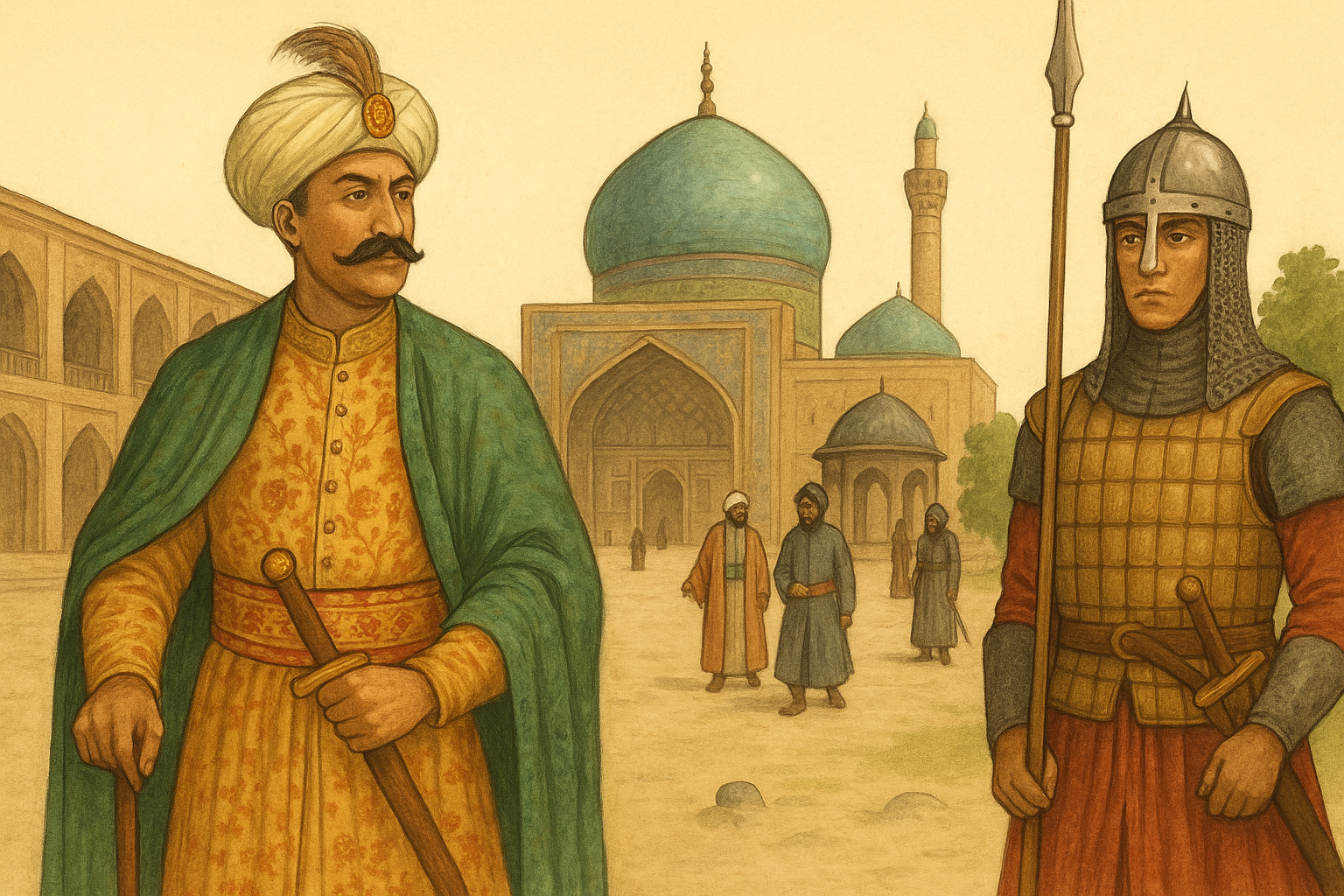Lesson 2: Safavid Persia (Cultures of South and Southwest Asia)
Safavid Persia: A Powerful Empire in the East
The Safavid Empire ruled Persia (today’s Iran) from 1501 to 1736. It was strong, rich, and very different from the Ottoman Empire next door.
👫 Social Life in Safavid Persia
People in Safavid Persia lived in villages, cities, or nomadic groups. Many people were farmers, weavers, or merchants. Cities like Isfahan were full of life, with busy markets, art, and music.
In the cities, people wore colorful clothes and enjoyed poetry, carpets, and music. The king (shah) wanted his empire to look beautiful, so he invited artists from across the land.
📖 Story: One day, the Shah of Persia walked through Isfahan and saw a poor man weaving a carpet with beautiful colors. The Shah said, “This carpet is more beautiful than gold!” He gave the man coins and asked him to make carpets for the palace. Safavid carpets became famous around the world.
🏛️ Political Power: The Shah and His Rule
The Safavid Empire was led by a strong king called the Shah. The most famous was Shah Abbas the Great (1588–1629). He moved the capital to Isfahan, made peace with enemies, and created a powerful army.
Shah Abbas also had slave soldiers trained from Christian lands—like the Ottomans' Janissaries. They became loyal fighters and guards.
🕊️ He made smart deals with European traders and fought the Ottomans and Uzbeks to protect the empire.
☪️ Religion: Shia vs. Sunni
The Safavid Empire was Shia Muslim, while most of the Muslim world, like the Ottoman Empire, was Sunni. This caused religious conflict.
The Safavid leaders made Shia Islam the official religion. Everyone had to follow it. If not, they could be punished.
⚔️ Sometimes, there were wars between the Safavids (Shia) and the Ottomans (Sunni). The two empires did not agree about who should lead Islam.
📖 Story: A Safavid religious leader once said, “We follow the true family of the Prophet.” The Ottomans said, “No, anyone who is strong and wise can lead.” This argument led to battles, but it was also about power and land.
💡 Intellectual Life: Art and Learning
The Safavids loved learning. Shah Abbas opened schools, libraries, and places for debate. Scholars studied the Quran, poetry, and science.
🖋️ Persian poetry and calligraphy (beautiful writing) were very popular. Writers told stories of love, faith, and courage.
🎨 Artists painted miniatures—small, colorful pictures that told stories. They also designed mosques, gardens, and palaces with beautiful tiles.
🔧 Technology and Military
The Safavids used gunpowder, cannons, and muskets in battle—like the Ottomans and Mughals. This made them part of the Gunpowder Empires.
🏹 But not all parts of the army were modern. Some old-style warriors still used bows and swords. Shah Abbas worked hard to modernize his army.
🚶♂️ He also built roads and bridges to help trade and move the army faster.
💰 Economy: Trade and Wealth
The Safavid Empire became rich from trade. They sold carpets, silk, and spices to Europe and Asia. Isfahan was a center of global trade.
🏺 They made fine ceramics, cloth, and metalwork. Markets were full of goods from India, Europe, and China.
📖 Story: A European trader came to Isfahan and said, “I have never seen a city so clean and beautiful.” He bought carpets and tea to sell back in Europe. Many traders returned again and again.
